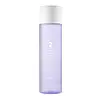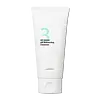What's inside
What's inside
 Key Ingredients
Key Ingredients

 Benefits
Benefits

 Concerns
Concerns

 Ingredients Side-by-side
Ingredients Side-by-side

Onsen-Sui 89%
1,2-Hexanediol
Skin ConditioningMethylpropanediol
SolventGlycerin
HumectantNiacinamide
SmoothingSorbitol
HumectantXylitol
HumectantHydroxyethyl Urea
HumectantSodium Polystyrene Sulfonate
Emulsion StabilisingSodium Hyaluronate
HumectantSodium Hyaluronate Crosspolymer
HumectantHydrolyzed Hyaluronic Acid
HumectantHyaluronic Acid
HumectantHydrolyzed Sodium Hyaluronate
Skin ConditioningMorinda Citrifolia Extract
AstringentCarica Papaya Fruit Extract
Skin ConditioningButylene Glycol
HumectantMadecassoside
AntioxidantCentella Asiatica Extract
CleansingChamomilla Recutita Flower Extract
MaskingRosmarinus Officinalis Leaf Extract
AntimicrobialGlycyrrhiza Glabra Root Extract
BleachingPentylene Glycol
Skin ConditioningPolygonum Cuspidatum Root Extract
AntioxidantScutellaria Baicalensis Root Extract
AstringentCamellia Sinensis Leaf Extract
AntimicrobialGluconolactone
Skin ConditioningWater
Skin ConditioningHydroxyethylcellulose
Emulsion StabilisingPolyglyceryl-10 Laurate
Skin ConditioningBetaine Salicylate
AntimicrobialPolyquaternium-51
Skin ConditioningDisodium EDTA
Parfum
MaskingOnsen-Sui 89%, 1,2-Hexanediol, Methylpropanediol, Glycerin, Niacinamide, Sorbitol, Xylitol, Hydroxyethyl Urea, Sodium Polystyrene Sulfonate, Sodium Hyaluronate, Sodium Hyaluronate Crosspolymer, Hydrolyzed Hyaluronic Acid, Hyaluronic Acid, Hydrolyzed Sodium Hyaluronate, Morinda Citrifolia Extract, Carica Papaya Fruit Extract, Butylene Glycol, Madecassoside, Centella Asiatica Extract, Chamomilla Recutita Flower Extract, Rosmarinus Officinalis Leaf Extract, Glycyrrhiza Glabra Root Extract, Pentylene Glycol, Polygonum Cuspidatum Root Extract, Scutellaria Baicalensis Root Extract, Camellia Sinensis Leaf Extract, Gluconolactone, Water, Hydroxyethylcellulose, Polyglyceryl-10 Laurate, Betaine Salicylate, Polyquaternium-51, Disodium EDTA, Parfum
Glycerin
HumectantWater
Skin ConditioningSodium Cocoyl Glycinate
CleansingDisodium Lauroyl Glutamate
CleansingBetaine
HumectantLauryl Betaine
Cleansing1,2-Hexanediol
Skin ConditioningHydroxypropyl Starch Phosphate
Laminaria Japonica Extract
Skin ProtectingEclipta Prostrata Leaf Extract
Skin ConditioningCentella Asiatica Extract
CleansingFicus Carica Fruit Extract
HumectantUlmus Davidiana Root Extract
Skin ConditioningAmaranthus Caudatus Seed Extract
Skin ConditioningRosmarinus Officinalis Leaf Oil
MaskingHydrogenated Lecithin
EmulsifyingSodium Chloride
MaskingPolyquaternium-39
Decylene Glycol
Skin ConditioningButylene Glycol
HumectantFructooligosaccharides
HumectantBeta-Glucan
Skin ConditioningHydrolyzed Hyaluronic Acid
HumectantCeramide NP
Skin ConditioningHydroxyacetophenone
AntioxidantEthylhexylglycerin
Skin ConditioningGlycerin, Water, Sodium Cocoyl Glycinate, Disodium Lauroyl Glutamate, Betaine, Lauryl Betaine, 1,2-Hexanediol, Hydroxypropyl Starch Phosphate, Laminaria Japonica Extract, Eclipta Prostrata Leaf Extract, Centella Asiatica Extract, Ficus Carica Fruit Extract, Ulmus Davidiana Root Extract, Amaranthus Caudatus Seed Extract, Rosmarinus Officinalis Leaf Oil, Hydrogenated Lecithin, Sodium Chloride, Polyquaternium-39, Decylene Glycol, Butylene Glycol, Fructooligosaccharides, Beta-Glucan, Hydrolyzed Hyaluronic Acid, Ceramide NP, Hydroxyacetophenone, Ethylhexylglycerin
 Reviews
Reviews

Ingredients Explained
These ingredients are found in both products.
Ingredients higher up in an ingredient list are typically present in a larger amount.
1,2-Hexanediol is a synthetic liquid and another multi-functional powerhouse.
It is a:
- Humectant, drawing moisture into the skin
- Emollient, helping to soften skin
- Solvent, dispersing and stabilizing formulas
- Preservative booster, enhancing the antimicrobial activity of other preservatives
Butylene Glycol (or BG) is used within cosmetic products for a few different reasons:
Overall, Butylene Glycol is a safe and well-rounded ingredient that works well with other ingredients.
Though this ingredient works well with most skin types, some people with sensitive skin may experience a reaction such as allergic rashes, closed comedones, or itchiness.
Learn more about Butylene GlycolCentella Asiatica Extract (Centella) is derived from an herb native to Southeast Asia. It is famous for its anti-inflammatory and soothing properties.
Centella is rich in antioxidants and amino acids, such as Madecassic Acid and Asiaticoside.
Studies show the compounds in centella help with:
The combination of all these properties makes centella effective at soothing, hydrating, and protecting the skin.
Other great components of centella include Vitamin A, vitamin C, several B vitamins, and Asiatic Acid.
Fun fact: Centella has been used as a medicine and in food for many centuries. As a medicine, it is used to treat burns, scratches, and wounds.
Learn more about Centella Asiatica ExtractGlycerin is already naturally found in your skin. It helps moisturize and protect your skin.
A study from 2016 found glycerin to be more effective as a humectant than AHAs and hyaluronic acid.
As a humectant, it helps the skin stay hydrated by pulling moisture to your skin. The low molecular weight of glycerin allows it to pull moisture into the deeper layers of your skin.
Hydrated skin improves your skin barrier; Your skin barrier helps protect against irritants and bacteria.
Glycerin has also been found to have antimicrobial and antiviral properties. Due to these properties, glycerin is often used in wound and burn treatments.
In cosmetics, glycerin is usually derived from plants such as soybean or palm. However, it can also be sourced from animals, such as tallow or animal fat.
This ingredient is organic, colorless, odorless, and non-toxic.
Glycerin is the name for this ingredient in American English. British English uses Glycerol/Glycerine.
Learn more about GlycerinHydrolyzed Hyaluronic Acid is a form of hyaluronic acid. It is created by the hydrolysis of hyaluronic acid with a high molecular weight. Once created, Hydrolyzed Hyaluronic Acid has a low molecular weight.
Low molecular weight HA has been shown to hydrate and increase elasticity of the skin. Increasing elasticity is also associated with reduction of wrinkle depth.
One study found topical low molecular weight hyaluronic acid may be considered for the treatment of rosacea in the adult population. However, we always recommend speaking with a professional about your skin concerns.
Hyaluronic acids are a humectant. This means they draw moisture from the air. Hyaluronic acids help moisturize, soothe, and protect the skin.
Read more about other common forms of hyaluronic acid:
Learn more about Hydrolyzed Hyaluronic AcidWater. It's the most common cosmetic ingredient of all. You'll usually see it at the top of ingredient lists, meaning that it makes up the largest part of the product.
So why is it so popular? Water most often acts as a solvent - this means that it helps dissolve other ingredients into the formulation.
You'll also recognize water as that liquid we all need to stay alive. If you see this, drink a glass of water. Stay hydrated!
Learn more about Water